Sand grains magnified 110-250 times reveal each grain is unique.
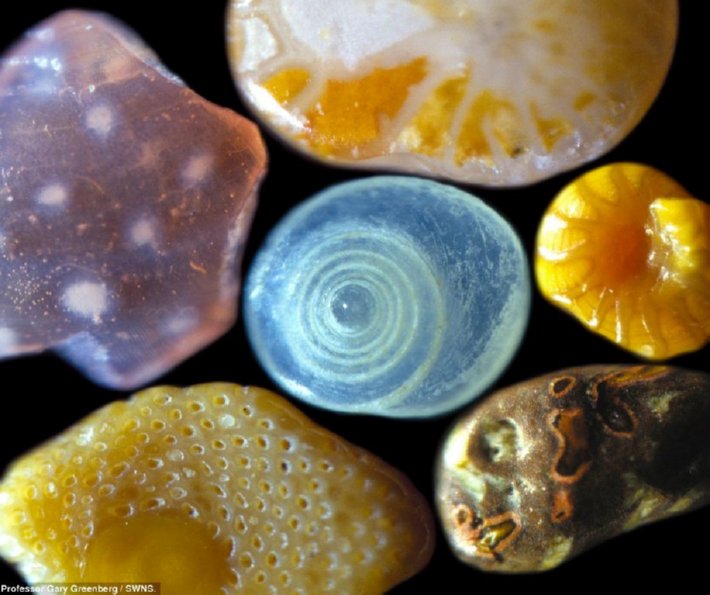
The tip of a spiral shell has broken off and become a grain of sand. After being repeatedly tumbled by action of the surf this spiral sand grain has become opalescent in character. It is surrounded by bits of coral, a pink shell fragment, a foram (a type of protozoa) and volcanic material. Photo copyright Dr. Gary Greenberg.
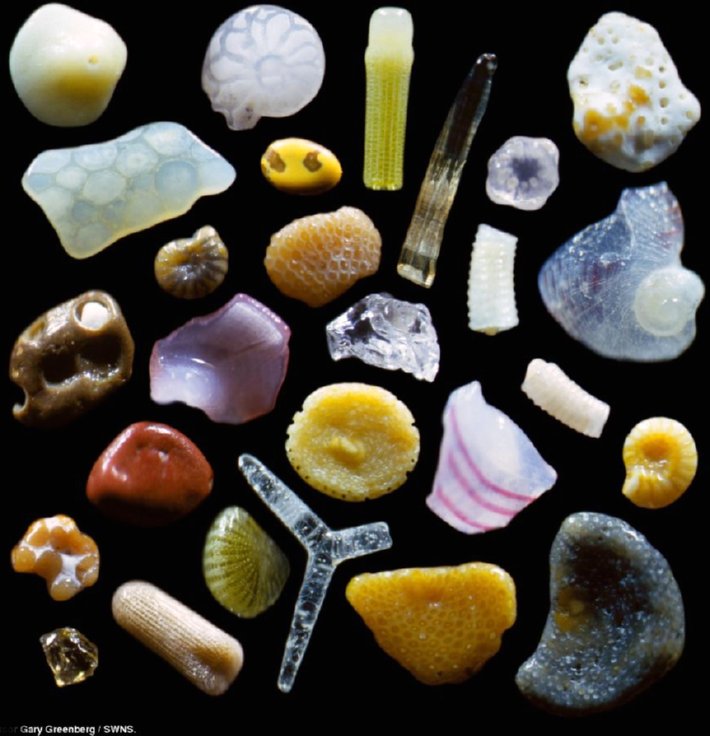
A handful of sand grains selected from a beach in Maui and arranged on a black background. Photo copyright Dr. Gary Greenberg.
Every grain of sand in the world is unique when viewed through a microscope.
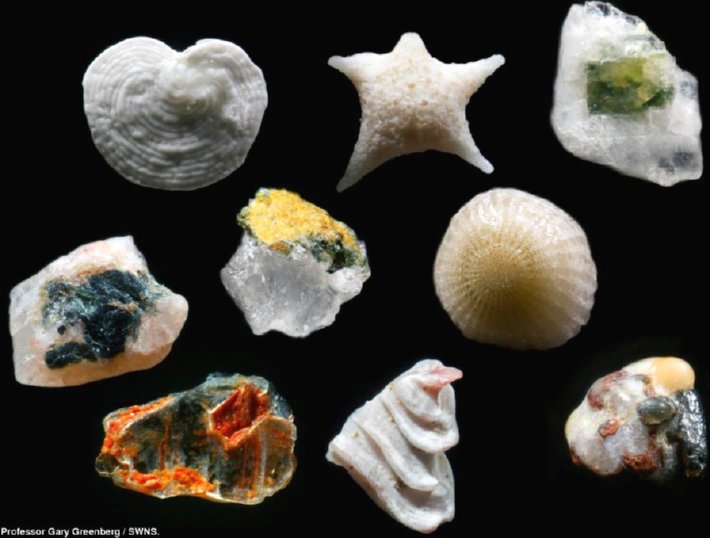
Sand magnified 250 times. Photo copyright Dr. Gary Greenberg.
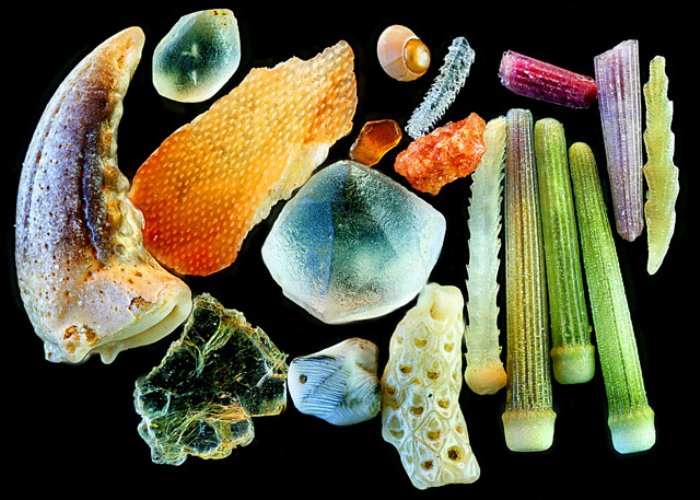
Sand Magnified. Photo by Yanping Wang.
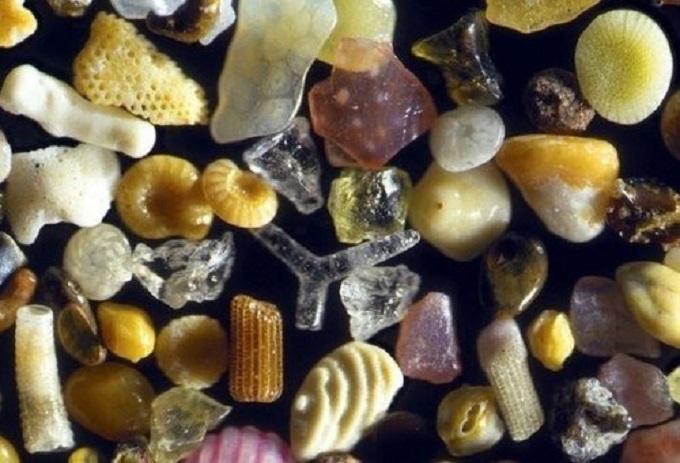
Sand magnified 250 times. Photo via Tumblr.
Sand Magnified Around The World
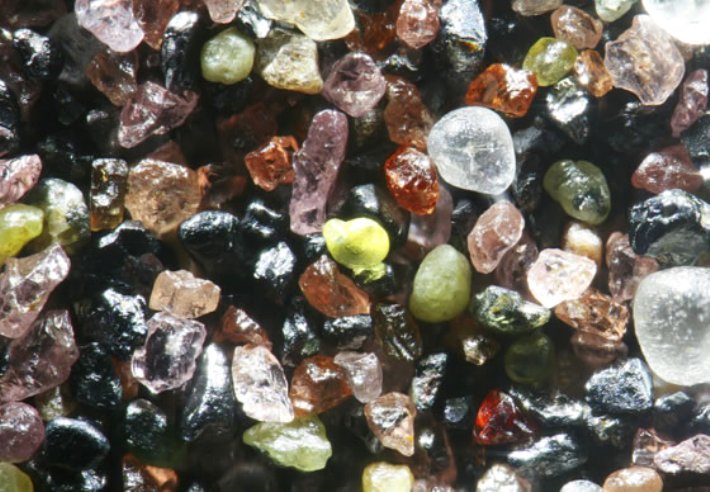
The glacially deposited sands around Lake Winnibigoshish, Minnesota, contain abundant sediments from the igneous and metamorphic minerals of the Lake Superior basin. A sample includes pink garnets, green epidote, iron-rich red agates, black magnetite, and hematite. Photo copyright Dr. Gary Greenberg.
Magnified grains of star sand from Southern Japan, made up of the calcified shells of tiny organisms. Photo by Richard Mouser Williams.
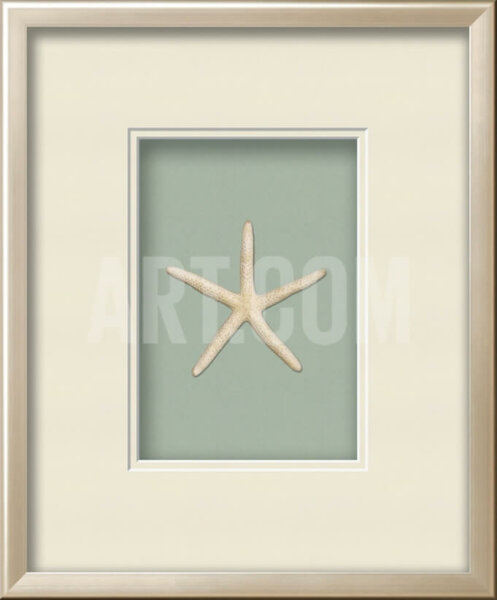
Beautiful Framed Seashell
Neat idea for decorating a beach house, or any space you want a splash of the sea. The frame is 14″x17″, and yes, it’s a real seashell. Sold by Art.com for $119.99.
Magnified grains of Star Sand. Photo by Richard Mouser Williams.
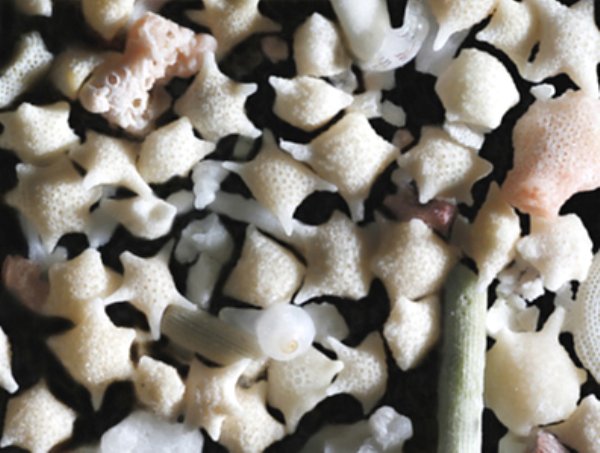
Puffy Stars: Star-Shaped Sand Grains from Okinawa. These tiny foram, a type of protozoa, secrete beautiful star-shaped, calcium carbonate shells, or tests. Photo via sandgrains.com.
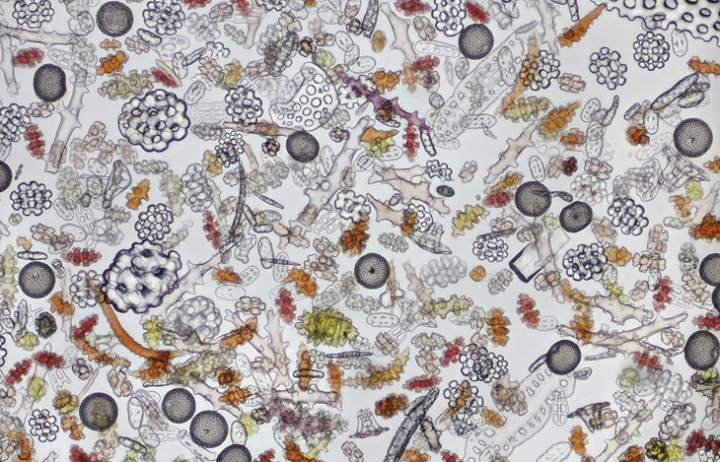
Coral sand magnified one-hundred times using transmission electron microscopy, brightfield mode. By Dr. David Maitland, Feltwell, UK, microscopyu.com
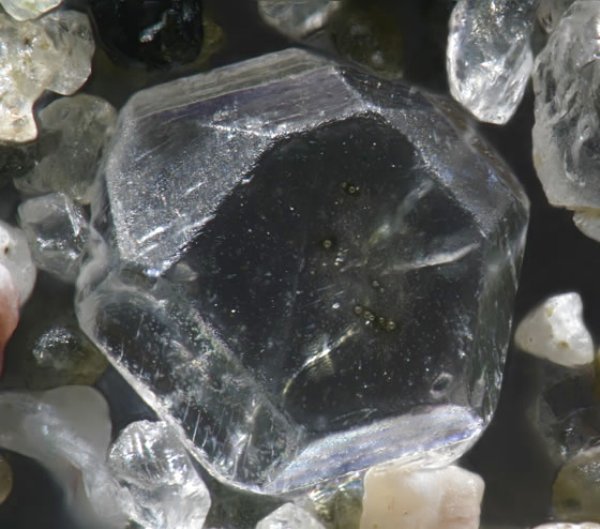
Many grains of sand are tiny crystals (shiny, flat-sided solids). Sand from Zushi Beach, Japan, contains what looks like a sapphire crystal. The crystal is larger than the surrounding grains and has survived eroding because of its hardness and quality. Photo copyright Dr. Gary Greenberg.
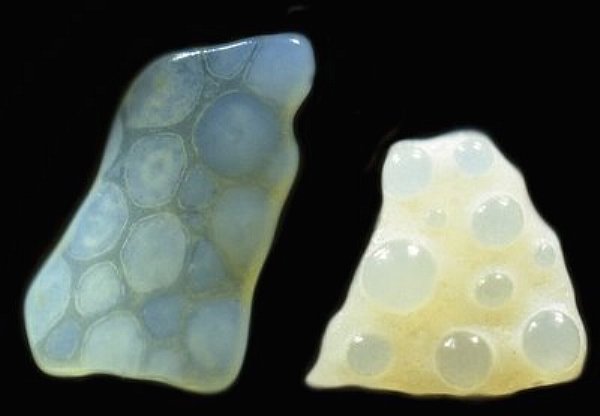
Fragments of baby sea urchin shells, magnified one-hundred times. Biogenic sand, formed from the remains of marine life, is the major ingredient of many tropical beaches. Via popgive.com. Originally found at “popgive.com/2009/01/tiny-work-of-art-in-each-grain-of-sand.html”
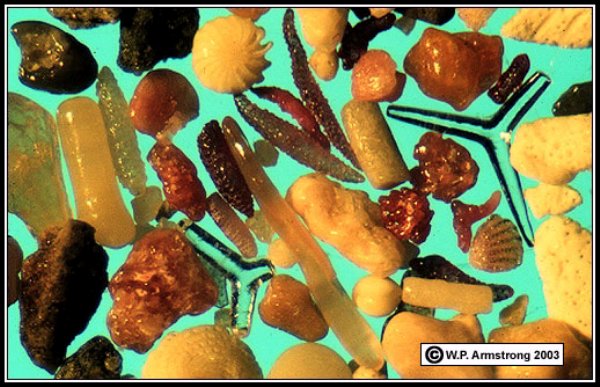
A magnified view of the tropical beach sand from the Caribbean island of St. John (U.S. Virgin Islands). The grains include porous fragments of brightly-colored corals, minute foraminiferan shells, fragments of sea shells and shiny, star-shaped sponge spicules. Originally found at “waynesword.palomar.edu/ww0704b.htm”
Sand Photographer Dr. Gary Greenberg
Every grain of sand is a jewel waiting to be discovered. That’s what Dr. Gary Greenberg found when he first turned his microscope on beach sand. Gemlike minerals, colorful coral fragments, and delicate microscopic shells reveal that sand comprises much more than tiny beige rocks.
Author and photographer Dr. Gary Greenberg is a visual artist who creatively combines art with science. He has a Ph.D. in biomedical research from University College London and holds 17 patents for high-definition 3-D light microscopes. Dr. Greenberg lives in Haiku, Hawaii.
Dr. Greenberg has published two books:
- A Grain of Sand: Nature’s Secret Wonder
- The Secrets of Sand: A Journey into the Amazing Microscopic World of Sand
The Universe Of Sand
Carl Sagan famously remarked “the total number of stars in the universe is greater than all the grains of sand on all the beaches on the planet Earth.” University of Hawai’i researches estimate that the total number of ‘all’ grains of sand on the whole planet could be approximately 75 billion billion. Scientists still believe there are more stars in the Universe.
Speaking of planets: If a grain of sand represented an entire galaxy; so each grain of sand, or galaxy, contains 100’s of billions of stars, you would need to fill six rooms full of sand to contain all the galaxies in the known universe. If you drilled a tiny hole in one of the grains of sand, ‘our Milky Way universe,’ that would be the area that we have been capable of seaching for planets so far. About 2000 planets have been discovered so far.

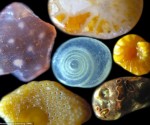
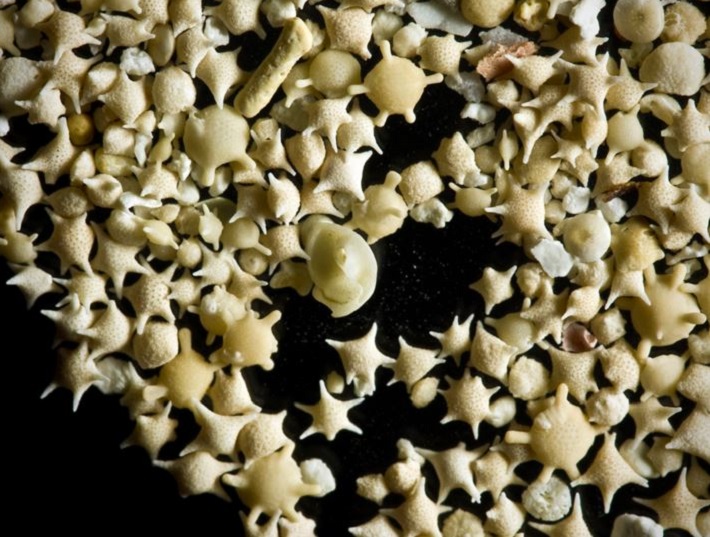
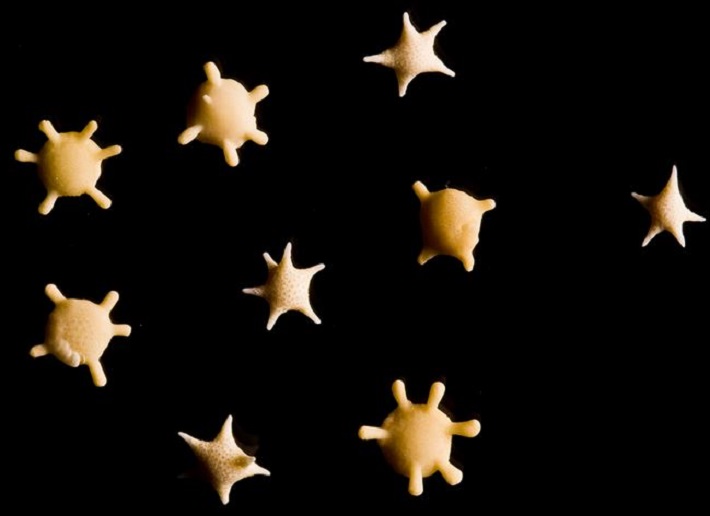


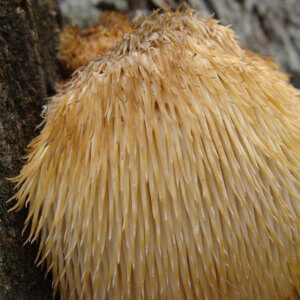



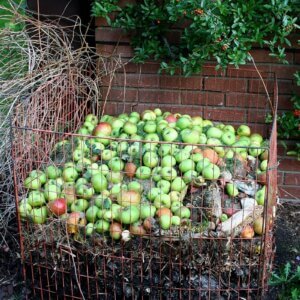


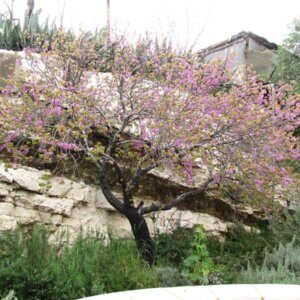

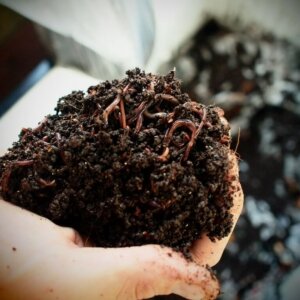

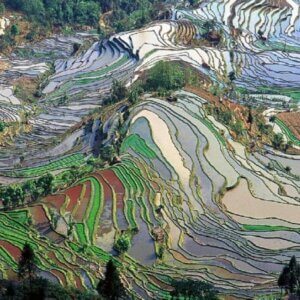



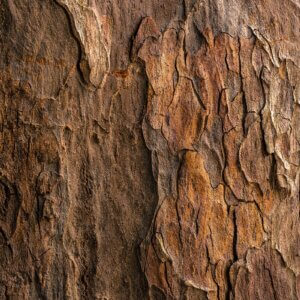



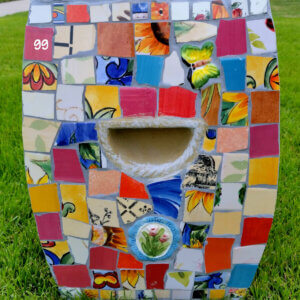


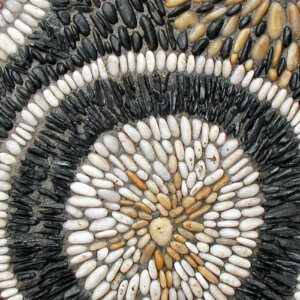






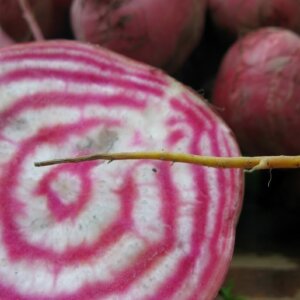






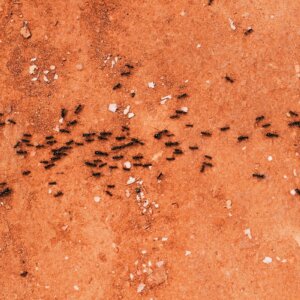
Very interesting and enlightening. Thank you.
How amazing is God! seriously! He even created SAND to be each different and unique! GOD IS AWESOME!!!!!!
I love photographing all sorts of subjects and wish that I could have the necessary equipment to photo such beautiful pictures as you have taken. Both fascinating as well as beautiful. Thank you for sharing.
If we could only be able to find a way to make the ones that He created to understand that He is Who He says He is in the Book that He had written for us so that we would be obedient as He tells us to be; that we could live with Him in eternity. His creation is proof positive that He can and will do just as He says He will! Wow!!
Oh God how great Thou are. Even every grain of sand is different.
Absolutely lovely and surprising.
This is just how……. remarkable,unimaginable,wondrous, awe-inspiring, our God really is! We can never realize His Magnificence, His Glory, His Love, His power, His abilities, or Him until we see Him in all His Glory in the Everafter!!
Absolutely fascinating and beautiful but I think this has more to do with science…..
Beautiful pictures. I had no idea sand was so wonderful. Thank you for sharing.
what a wonderful sight. I had no idea that sand was so pretty and unique/
Amazing. Beautiful…..Awesome……
All this breathtaking beauty..right under our feet! Thank you for your pursuit of knowledge and beauty.
Perfect example of our God letting us to see his smallest visible creations and now we can share it with the rest of the world. Thanks for sharing these beautiful proof of God’s love for us!
Amazing how we can have a God who creates Wonderful things for our pleasure
Amazing.
Most amazing.
I am forever amazed at NATURE’S creations. Our discoveries of these wonder will never cease.
Who would have guessed all that beauty is in the grains of sand that people walk on and scatter all around!
Only God could create such beauty and have the humor to hide it from plain view.
Thank you for this facinating report.
Thank you, as a retired Geologist appreciate seeing the different content of the grains from the different parts of the world
OMG! I had no idea sand was so magnificent! I couldn’t believe my eyes. Such beauty and each one so very different . It’s totally AMAZING!
They are like gorgeous jewels…each one more gorgeous and unique than the last.
Absolutely incredible..I can’t even think of enough adjecdtives for them, so sI’ll stop here.
🙂
THIS WAS SO SPECIAL. I’VE TRAVELED THE WORLD, LIVED LIFE LONG, SHARED MANY IDEAS WITH PEOPLE EVERYWHERE AROUND THE GLOBE…..AND THIS SHOWED ME I STILL KNOW SO LITTLE. IT MAde me hopeful, happy and I must send it everywhere so other KNOWITALLS can be young once more too! THANK YOU
what rockks look like when cut in haft unbelieveble sand even more unique, never the same like snowflakes
This truly is amazing… God shows his grace through many things- from the Earth’s creation to a single grain of sands
I had no idea. All of the hours and days spent walking on beaches, and I had no idea. The next time I pick up a handful of sand, passing it back and forth, palm to palm forming a heavy, solid stone like formation, I will do it with new wonder. Thank you for this beautiful experience!
Fabulous images and inciteful text … truly thrilling in the old fashioned sense of that word.
Fabulous! I had no idea!!!
Very interesting, nay, fascinating!
Only the GRACE of God is more amazing and beautiful. Yet so many forsake His GRACE for the simple hidden things He has created.
The next time ‘you’ are at the beach, and you find your feet emulsified within the sand, scoop up a cupful of sand with both hands. Q. How many granules of sand do you suppose the average hand holds? A. Approximately 1 million. (I’ve done research on this). This show just how tiny ‘we’ as a species are. Better example of what I speak is, using U.S. standard units of measurments, for all practical purposes, the smallest unit of linear measurement is the *inch. Everyone can visualize approximately how long an inch is. From the end of your thumb to the first knuckle is approximately 1′. The next increase to the inch would be … what? A foot or 12′. That’s correct. Now all of you can visualize how long a foot is. You’ve seen enough 1′ rulers. Now I think you see just where I’m going. What’s the next unit of measurement going forward that is from 1′? Right again. 1 yard (or) 36′. The next unit might be somewhat unknown to you unless you’ve visited the horse track. You’ve heard ‘this race is 10 furlongs. How long is a furlong? If you don’t know… it is 1/8th. of 1 mile. or 220 yds. The 220 yds. is also a distance run in high school track. It takes ‘8’ furlongs to equal 1 mile, which also happens to be our next unit of measurement. 1 mile = 1760 yards or 5,280 feet. Whether it’s ‘granules of sand’ or ‘units of measurments’ I hope that you can plainly see just how ‘minute’ we are. You probably can visualize how long 1 mile is. Youv’e notice mile markers on state highways and such. So, let’s re-cap on measurement.
We’ve mentioned the inch
the foot
the yard
the furlong
and finally the mile.
They are ‘5’ unit of measurements that we currently use in the United State of America on a daily basis.
When we speak of measurement when talking space the are but ‘3’ units.
First we have an Astrological Unit or 1 a.u.
An a.u. = the [mean] distance from planet earth to the sun, which is 93 million miles or easily written 93 (x) 10 to the ‘6’th. exponential power. (These numbers are just about impossible to imagine.) *Note: this a.u. is the [smallest] unit in measuring space. The second unit used when exploring space is the ‘light year’. You’ve heard the term. But what does it mean and exactly just how far is it? Well I’ll tell you. A light year is the distance that [light] travels in 1 calendar year. So how do we find out distance from here? We first have to know just how fast [light] travels in but 1 second. Does anyone know? The answer is 186,000 mile per second (mps). Now we take this 186,000 mps (x) 60 seconds to the minute = 17,160,000.
Now take that figure and multiply it by 60 min. per hour (mph), then that result 24 hours per day, then that result by 365 days in 1 year. Then you will have achieved ‘1’ [light] year (or) 6 trillion miles (or 6,000,000,000,000 miles (or) 6 (x)10 to the 12th. exponential power.
Now we proceed to the 3rd. and final unit of measurement when speaking about space. It is called the par sec. A par sec constitutes 3.5 [light years] l.y. or 21,000,000,000,000 miles or 21 (x) 10 to the 12th. exponential power. *One needs to know the powers of ’10’ in order to proceed. Your hand would collapse writing ‘all’ of the zeros.
When astronomers and astrophysicist speak, they speak in ‘hundreds’ if not ‘thousands’ of par secs. Now let’s get back to planet earth, OK.
We, as mortal humans, have landed and walked on the moon. (240,000 miles +/- from planet earth).
At the oceanic institutes around the globe, they have sent ‘bathespheres down to 10,000 feet or a mere 2 miles. 2 miles. The planet earth is approximately 8,000 miles in diameter (or) having a radius of 4,000. miles.
Needless to say, we have a ways to go.
There is your science lesson for today. Hope you learned something today. If nothing else … ‘you are finite’ in this world!
Your deity ‘insert name here’, may have created the universe, but it is the SCIENTIST that gave us the capability to observe and understand it.
I’m reminded of God’s promise to Abraham; that his offspring would be more numerous than the grains of sand on the earth.
Turns out, just as we are all unique, God made the grains of sand each unique as well.
Hm.m.m.m.m.m.m.m Seems to all fit, doesn’t it . . .
Simply amazing
I deal with bees and am wondering why 2 or 3 of these magnified grains of sand look exactly like miniature honeycomb! Any ideas?
Truly it is a wonderful world – such a pity then that we seem intent upon destroying it.
Just like people we ALL are different with as many different paths as there are people. I love these grains of sand the how individually beautiful each one is (again just like people). Love Joy Peace
Some of the ‘honeycombed’ pieces look like fossil sponges or …I can’t remember the other type fossil. But many of these microscopic sand grains appear to be marine fossils. Amazing!
Simply amazing! This is such a beautiful world!
Were any photos taken of the oddity known as ‘Singing’ sand ? or ‘Barking’ sand ? Such a photo could permit speculation as to why some sand stretches produce these sounds when they are walked upon.
Thank you Dr. Gary Greenberg.
You brought our attention to the handy work of God. We need to appreciate the sand we walk on and the sky we look at every day. And at the end of the day, take the time to watch the sunset. Each day is a gift and all our homes , money and cars are on loan to us for a little while.
Amazing ! each grain is unique , each human being is unique ! Fabulous world.
Interesting to see about desert grains as SAHARA or SAHEL. I Will add it .
Many thanks DICK
Fascinating and most beautiful to a lifetime beach lover. The sand will never be the same.
Thank you.
what a fascinating world right under our feet waiting to invite all into a beautiful complex panorama. Thank you Dr Gary Greenberg
I’m always awed by the beauty of nature…and, the wonderful people who explore it all. Thank You…I will send this to my loved ones…
These art photos and the grains of sand are awesome! Thank you for sharing
Oh,how greatful we should all be to be able to enjoy all of ‘GOD’S’ beautiful work !! Not only he made each person in the world different , but he has made all the sea shell’s different !! Isn’t ,’GOD’S’ work wonderful ? We should all remember to thank him every day !!!
Neat!
Genesis 22:17 – That in blessing I will bless thee, and in multiplying I will multiply thy seed as the stars of the heaven, and as the sand which is upon the seashore; and thy seed shall posses the gate of his enemies;
I have been ask many times what I saw when I was dead for 18 minutes back few months ago. This was also my second time to die and come back. Let me say the beauty you have seen with the grains of sand give only a glimpse of the beauty of heaven. It is hard to describe the beauty of heaven just like it would be hard to describe the beauty of the grains of sand.
No doubt the monkey cosmos is exactly like the macro cosmos, just change the scale factor or fractal. It’s all simply stunpresionantening.
Ser
Beautiful Grains of Sands! Remarkable
Thanks